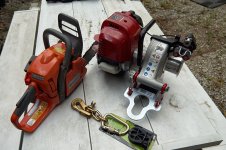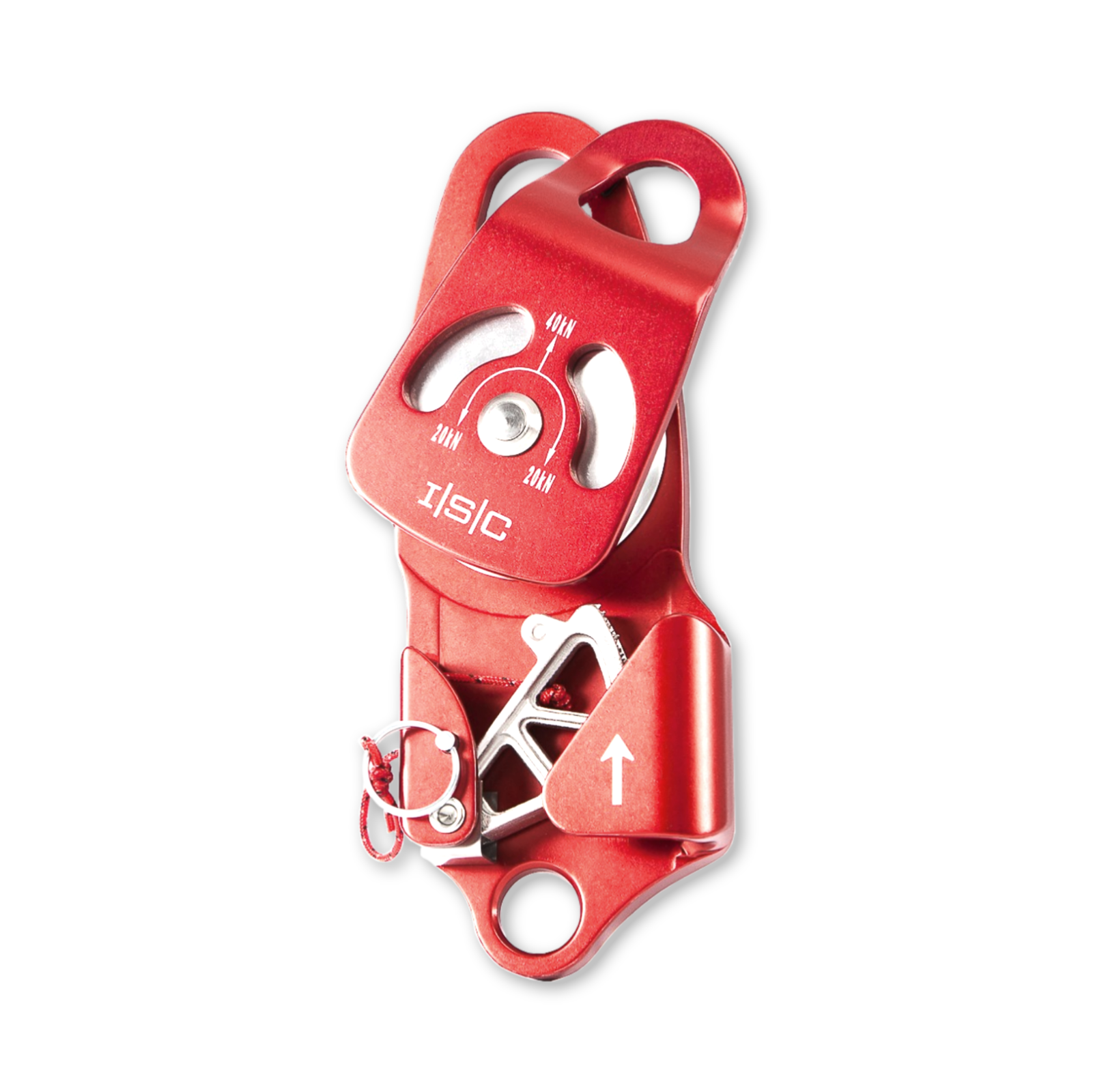I started this thread asking about PT's 2 ton winch ($1300) to use clearing a hillside with limited room to operate a tractor and also having a few thorn trees.
i7win7 posted a helpful video of the portable winch PWC4000, and I found a used one at an affordable price that I bought and will be using once snake season is over. (The neighbors across the road caught a 4-5' rattlesnake in their yard over the weekend and then released it into their woods, but no doubt I have them as well.)
I will be asking more PT questions a bit later about cutting some hillside areas, but will pause to post some initial thoughts about the pcw4000 now that I actually have it.
First thing is the PCW4000 strikes me as much safer to have a clutch and throttle so you can wind the rope around the capstan without it turning. Once you apply tension to the rope, the throttle ramps up and turns the capstan. There are also pawls on the winch that allow you to lock the rope in place which is infinitely useful if you are trying to winch a leaner.
The thing that struck me when I got the winch was the heft at 26.5 pounds. It's larger in person than it looks in the video. I made a picture next to my 16" Husqvarna for size comparison along with a few accessories I also purchased (a mounting plate to attach the winch to a trailer hitch ball and some accessories for attaching the pulling rope).
The engine is a 2 hp Honda GX50 4 stroke. The video makes it sound louder to me than it is in person. The specs say it has a belt driven OHV. Not crazy about having a belt, but Honda advertises it as a lifetime belt.
The video demonstrates anchoring the winch to a tree with a tree strap. In my use case, being able to anchor to a tree is essential. However, watching some other videos, it seems to me that a tree strap allows the winch more movement up and down than I am personally comfortable with. I wouldn't want a situation where movement in the winch would allow the capstan to hit the ground or slam into a tree trunk and become damaged. The capstan itself costs about $100 with shipping. It would be important to protect the capstan while transporting the winch and while using it rather than ding it up, and have to replace it.
Portable winch sells a specific tree mount PCA1269 ($180) that would seem to be the best tree mount option in that it allows some side to side pivoting, but anchors the winch to the tree in a way that I would not expect the winch to be able to contact the ground or the tree trunk by accident.
The PCW4000 retails for $1699 plus shipping at the Portable Winch co. website, but is about $1614 shipped on Amazon. 3/8 x 164' double braided rope is $99 at PWC. Their gate hook with latch is $20. Their Rope WizerTM is $19.99 which is supposed to avoid a loss in strength of the pulling rope due to having to otherwise knot the rope. They have a log cone priced at $150 and various pulleys.
I tend to think the cone is important because I do not want a log hung up when I'm pulling with a rope that could snap. I also think the cone helps to maximize the available pulling power of the winch.
I'll make my own cone from a 55 gallon plastic drum and fabricate my own tree mount (or I may cave and order one from PWC).
If someone were to buy the winch plus a lot of these accessories new, that's quite a bit of money that could be put towards a tractor mounted tree winch that would have a higher pulling capacity and winch speed. However, in my situation, I don't want to deal with flat tires, I'm dealing with limited access where portability is useful and so I'm going to try out the portable winch maybe Nov-December depending on the weather.
I could potentially see the portable winch as useful to PT owners. The single line pull rating is 2,200 lbs with a winch speed of 44 feet per minute. Since it is designed to be anchored to a tree, you wouldn't be winching against your PT's weight and would have more flexibility in placement of the winch instead of having a hydraulic winch mounted to the loader on the PT.



